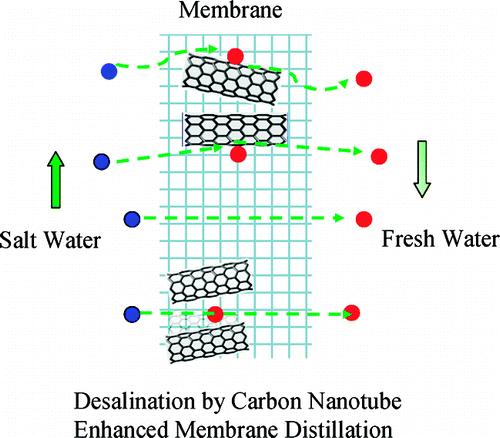Membrane distillation provides several advantages. It is a clean and non-toxic technology and can be performed at temperatures in the range of 90-60 degrees Celsius

A researcher from the New Jersey Institute of Technology was able to develop a faster, more efficient and cheaper desalination process based on carbon nanotubes. The process leads to obtaining an innovative and one-of-a-kind architecture for the membrane desalination process by fixing carbon nanotubes inside the membrane nozzles. Conventional approaches to desalination processes are based on thermal desalination and reverse osmosis.
"Unfortunately, the existing membrane desalination method is too expensive to use in countries and cities that require potable water," said the lead researcher. "Usually only the industry, where there is a high availability of unused heat, takes advantage of this process. However, we hope that our new research will lead to far-reaching consequences in favor of providing clean and drinkable water to the people who need it." The findings of the new study were published in the scientific journal Applied Materials & Interfaces.
Membrane desalination is a water purification process in which heated salt water is passed through a tube-like membrane, known as a hollow fiber. Using this structure, membrane desalination allows only the water vapor to pass through the walls of the hollow tube, while the liquid continues to flow on. When the system is turned on, potable water emerges from the stream of water vapor moving from the hot side to the cold side of the system. At the same time, salt water or salt solution passes through the system as waste through the fiber.
Membrane distillation provides several advantages. It is a clean and non-toxic technology and can be performed at temperatures in the range of 90-60 degrees Celsius. These temperatures are significantly lower than normal distillation processes where the temperatures are higher. High pressure is used in reverse osmosis.
At the same time, membrane distillation is not without its problems - the process is expensive and the success of the efficient and appropriate operation of the membrane may be challenging. "The biggest challenge of all," explains the lead researcher, "is to find suitable membranes that encourage an increased flow of water vapor, but at the same time prevent the salt from passing through."
The newly developed method provides a more efficient membrane by anchoring carbon nanotubes to the membrane nozzles. The new configuration of the membrane not only increases vapor permeability but also prevents liquid water from clinging to the nozzles of the membrane. The research findings show a significant increase in reducing the amounts of salt and water produced. "This is an unprecedented achievement that we are proud to announce," adds the researcher.
Another significant advantage is that the innovative process can assist membrane distillation at relatively low temperatures, at a faster flow rate and at higher salt concentrations. Compared to a normal membrane, this distillation process provides the same level of reduction in salt concentration at a temperature of 20 degrees Celsius, and at a six times faster flow rate.

2 תגובות
There is some confusion here, salt removal by membranes is done by high pressure (for sea water 40 to 70 bar) without increasing the temperature (there is a certain increase due to the work of the pumps). The process of distillation in its conventional definition is not a membrane (or "membrane") process. Water distillation processes are not economical because heating the water requires high energies. In my opinion, it is cheaper to bring water to a pressure of 50 bar than to bring it to a temperature of 90 (you can easily calculate). Another point is nano particles of carbon that can accumulate in cells and cause damage.
A tremendous achievement
Well done
This has the meaning of the third world if I am not mistaken